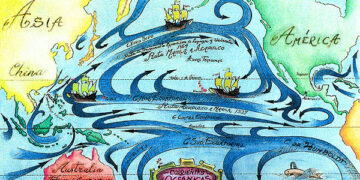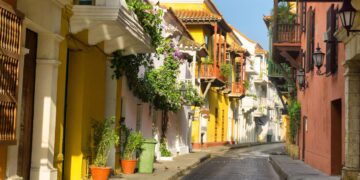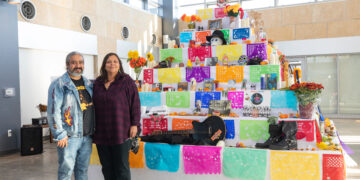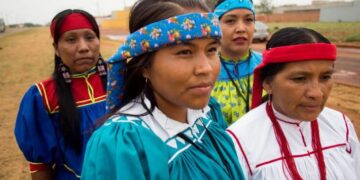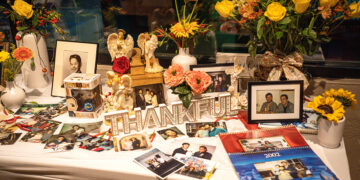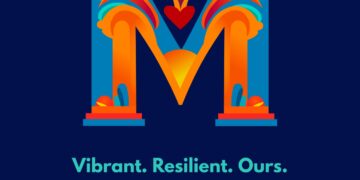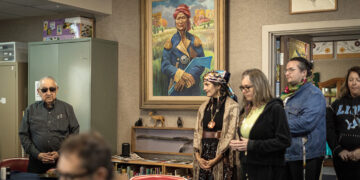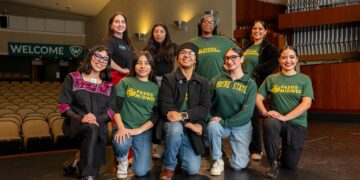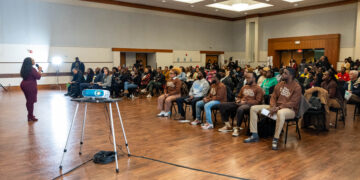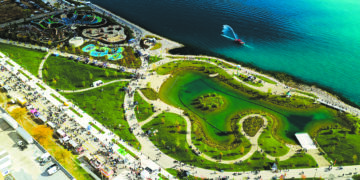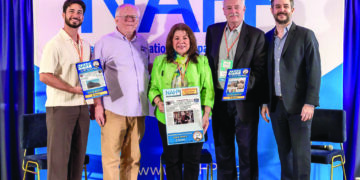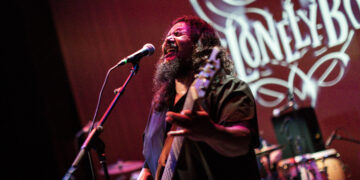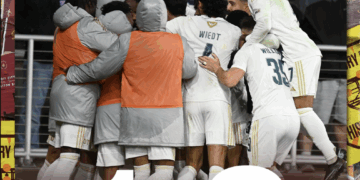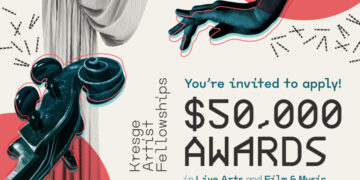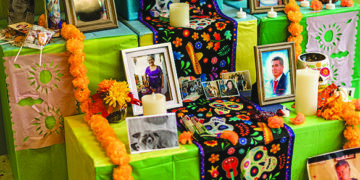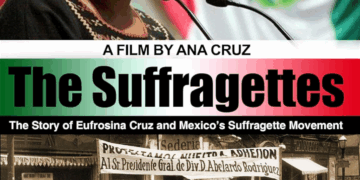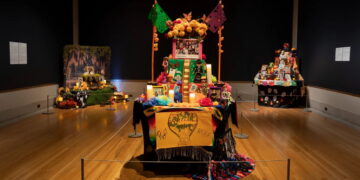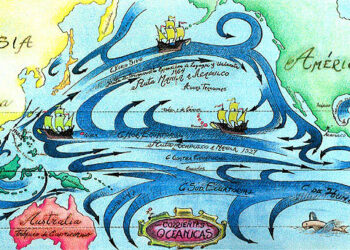In a powerful moment for Detroit’s Latino and Spanish-speaking creative community, four artists, Louis Aguilar, Kimberly Luther, Ivan Montoya, and Frisly Soberanis, have been honored through the prestigious 2025 Kresge Artist Fellowships, cementing their place at the heart of the city’s cultural fabric, but also their home countries.
Their recognition in literary and visual arts is not only a personal milestone but a testament to the richness of Latina/o/x voices shaping Detroit’s identity. As Kresge President and CEO Rip Rapson noted, the awards affirm that “Detroit’s creative community embodies resilience, vision, and transformation.”
“This year’s recipients exemplify the depth and breadth of artistry rooted in this city, from poetry that reclaims identity and uplifts voice to visual work that reframes legacy, place, and memory,” Rapson said.
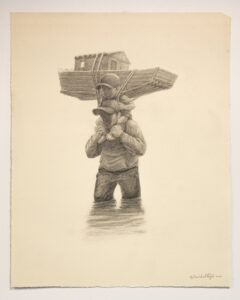
“Together, their contributions move us beyond what is seen and heard, into what must be felt, reminding us that the arts are not simply reflections of Detroit’s vitality, but active architects of its future.”
Veteran journalist and author Louis Aguilar, a 2025 Literary Arts Fellow, uses storytelling to explore identity, immigration, and family in Detroit’s Latino communities. The Mexican-American writer’s work in creative nonfiction reflects the unseen stories of generations who shaped the city but often went unrecognized.
“One of the many great things about it [the Kresge Fellowship] was I got to meet other artists,” Aguilar said.
“And I don’t even consider myself an artist journalist, but it’s great to be called an artist for a year.”
His upcoming work will examine Frida Kahlo and Diego Rivera’s time in Detroit, focusing on their 11-month residency in the city. Aguilar is also digging into a personal mystery; his grandfather may be depicted in Rivera’s famous Detroit Industry murals at the DIA.
“I told myself, if I win it [the Fellowship] this time, it will help me fulfill my final goal to write a creative nonfiction book about the subject,” he said.
Panamanian-American artist Kimberly Luther, honored in the ceramics category, is the only Panamanian visual arts fellow in this year’s cohort. Her work blends traditional clay techniques with themes of protest, memory, and place, often drawing from the vibrant sounds and colors of her childhood in Panama.
Luther described her style as a “quiet loudness,” layering textured surfaces to mirror the sensory rush of graffiti-covered Diablo Rojo buses and city energy.
“I have very strong, vibrant memories of my grandmother, my aunt Dida, my aunt Rosemary, and all of my cousins because we actually lived in Panama when I was younger in the Canal Zone,” Luther said.
“I’m mostly like the women in my family too, because they are such strong personalities and such strong women who’ve gone through so much.”
Her Kresge project will finish a deeply personal ceramic portrait of her mother holding the Panamanian flag during an anti-copper mining protest, symbolizing the resistance and pride passed through generations.
Mexican-American painter Ivan Montoya, named a 2025 Visual Arts Fellow, channels cultural memory and resistance through his art. His work weaves together textiles, color, and archival images to reflect on Chicano identity and the tensions between cultural preservation and assimilation.
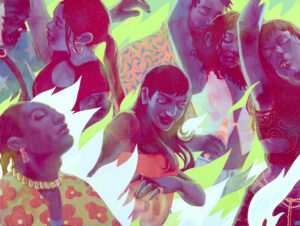
“I am interested in what happens when cultural heritage intersects with external pressures of assimilation,” Montoya said on his website of work.
“My work explores the resulting spark of identity that comes from this friction… I am drawn to the ethereal in-between space between two cultures that is navigated by many but represented by few.”
Montoya’s canvases reflect the personal and political dimensions of identity, migration, and community. His Kresge recognition not only honors individual vision, but also highlights the power of storytelling as resistance.
Guatemalan-born new media artist Frisly Soberanis received a 2025 Kresge Gilda Award in Visual Arts. Known for his immersive digital environments that blend video, virtual reality, and installation, Soberanis creates experiences that speak to the migrant journey, collective memory, and generational identity.
His projects, which have been featured at the Queens Museum, SXSW, and Mexico City’s Centro de Cultura Digital, now find a home in Detroit, where he continues to push the boundaries of participatory art rooted in cultural truth.
Using storytelling as a medium for community dialogue, Soberanis bridges the gap between past and present, memory and digital expression.
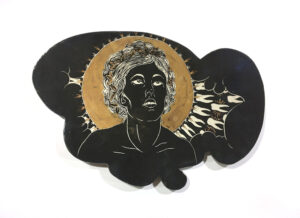
These honors extend beyond artistic recognition. They affirm the importance of Detroit’s Latino creators in a city where culture, community, and equity are tightly linked. Aguilar’s writing draws the bridge between past and present Mexican-American life in Detroit; Montoya and Luther elevate ancestral aesthetics in modern visual forms; Soberanis offers immersive encounters that challenge perception and deepen empathy.
“Detroit’s creative community embodies resilience, vision, and transformation,” Rapson said.
This article and photos were made possible thanks to a generous grant to EL CENTRAL Hispanic News by Press Forward, the national movement to strengthen communities by reinvigorating local news. Learn more at www.pressforward.news.
Creativos latinos reciben el financiamiento de Kresge 2025, honrando su herencia y poder artístico
En un momento crucial para la comunidad creativa latina e hispanohablante de Detroit, cuatro artistas, Louis Aguilar, Kimberly Luther, Ivan Montoya y Frisly Soberanis, han sido galardonados con los prestigiosos financiamientos para Artistas Kresge 2025, consolidando su lugar en el corazón del tejido cultural de la ciudad, así como de sus países de origen.
Su reconocimiento en las artes literarias y visuales no solo es un hito personal, sino un testimonio de la riqueza de las voces latinas que moldean la identidad de Detroit. Como señaló Rip Rapson, presidente y director ejecutivo de Kresge, los premios afirman que «la comunidad creativa de Detroit encarna la resiliencia, la visión y la transformación».
“Los galardonados de este año ejemplifican la profundidad y la amplitud del arte arraigado en esta ciudad, desde la poesía que reivindica la identidad y eleva la voz hasta el trabajo visual que replantea el legado, el lugar y la memoria”, dijo Rapson.

“Juntas, sus contribuciones nos llevan más allá de lo que se ve y se oye, hacia lo que se debe sentir, recordándonos que las artes no son simplemente reflejos de la vitalidad de Detroit, sino arquitectos activos de su futuro”.
El veterano periodista y autor Louis Aguilar, ganador del financiamiento de Artes Literarias 2025, utiliza la narrativa para explorar la identidad, la inmigración y la familia en las comunidades latinas de Detroit. La obra de no ficción creativa del escritor mexicoamericano refleja las historias ocultas de generaciones que moldearon la ciudad, pero que a menudo pasaron desapercibidas.
“Una de las muchas cosas geniales del financiamiento Kresge fue que pude conocer a otros artistas”, dijo Aguilar.
“Y ni siquiera me considero un periodista artístico, pero es fantástico que me consideren artista durante un año”. Su próxima obra examinará la estancia de Frida Kahlo y Diego Rivera en Detroit, centrándose en su residencia de 11 meses en la ciudad. Aguilar también está indagando en un misterio personal: su abuelo podría estar representado en los famosos murales de Rivera sobre la Industria de Detroit en el DIA.
“Me dije a mí mismo: si gano el financiamiento esta vez, me ayudará a cumplir mi objetivo final de escribir un libro de no ficción creativa sobre el tema”, dijo.
La artista panameña-estadounidense Kimberly Luther, galardonada en la categoría de cerámica, es la única ganadora panameña de artes visuales en la cohorte de este año. Su obra combina técnicas tradicionales de arcilla con temas de protesta, memoria y lugar, a menudo inspirados en los vibrantes sonidos y colores de su infancia en Panamá.
Luther describió su estilo como una “sonoridad silenciosa”, superponiendo superficies texturizadas para reflejar la saturación sensorial de los autobuses Diablo Rojo cubiertos de grafitis y la energía de la ciudad.
“Tengo recuerdos muy vívidos de mi abuela, mi tía Dida, mi tía Rosemary y todos mis primos, porque vivimos en Panamá cuando yo era más joven, en la Zona del Canal”, dijo Luther.
“Me parezco mucho a las mujeres de mi familia, porque tienen personalidades y experiencias muy fuertes, mujeres que han pasado por tantas cosas”.
Su proyecto Kresge consistirá en la finalización de un retrato en cerámica profundamente personal de su madre, sosteniendo la bandera panameña durante una protesta contra la minería de cobre, que simboliza la resistencia y el orgullo transmitidos de generación en generación.
El pintor mexicoamericano Iván Montoya, nombrado ganador del financiamiento en Artes Visuales 2025, canaliza la memoria cultural y la resistencia a través de su arte. Su obra combina textiles, color e imágenes de archivo para reflexionar sobre la identidad chicana y las tensiones entre la preservación cultural y la asimilación.

“Me interesa lo que sucede cuando el patrimonio cultural se cruza con las presiones externas de asimilación”, dijo Montoya en su sitio web.
Mi obra explora la chispa de identidad que surge de esta fricción… Me atrae el etéreo espacio intermedio entre dos culturas, transitado por muchos, pero representado por pocos.
Los lienzos de Montoya reflejan las dimensiones personales y políticas de la identidad, la migración y la comunidad. Su reconocimiento Kresge no solo honra la visión individual, sino que también resalta el poder de la narrativa como resistencia.
El artista de nuevos medios, nacido en Guatemala, Frisly Soberanis, recibió el Premio Kresge Gilda 2025 en Artes Visuales. Conocido por sus entornos digitales inmersivos que combinan video, realidad virtual e instalación, Soberanis crea experiencias que hablan de la travesía migratoria, la memoria colectiva y la identidad generacional.
Sus proyectos, que se han presentado en el Museo de Queens, SXSW y el Centro de Cultura Digital de la Ciudad de México, ahora encuentran un hogar en Detroit, donde continúa expandiendo los límites del arte participativo arraigado en la verdad cultural.
Utilizando la narración como medio para el diálogo comunitario, Soberanis conecta el pasado con el presente, la memoria con la expresión digital.

Estos honores van más allá del reconocimiento artístico. Reafirman la importancia de los creadores latinos de Detroit en una ciudad donde la cultura, la comunidad y la equidad están estrechamente vinculadas. La escritura de Aguilar conecta el pasado con la vida mexicoamericana presente en Detroit; Montoya y Luther enaltecen las tradiciones.
Estética tradicional en formas visuales modernas; Soberanis ofrece encuentros inmersivos que desafían la percepción y profundizan la empatía.
“La comunidad creativa de Detroit encarna la resiliencia, la visión y la transformación”, afirmó Rapson.

